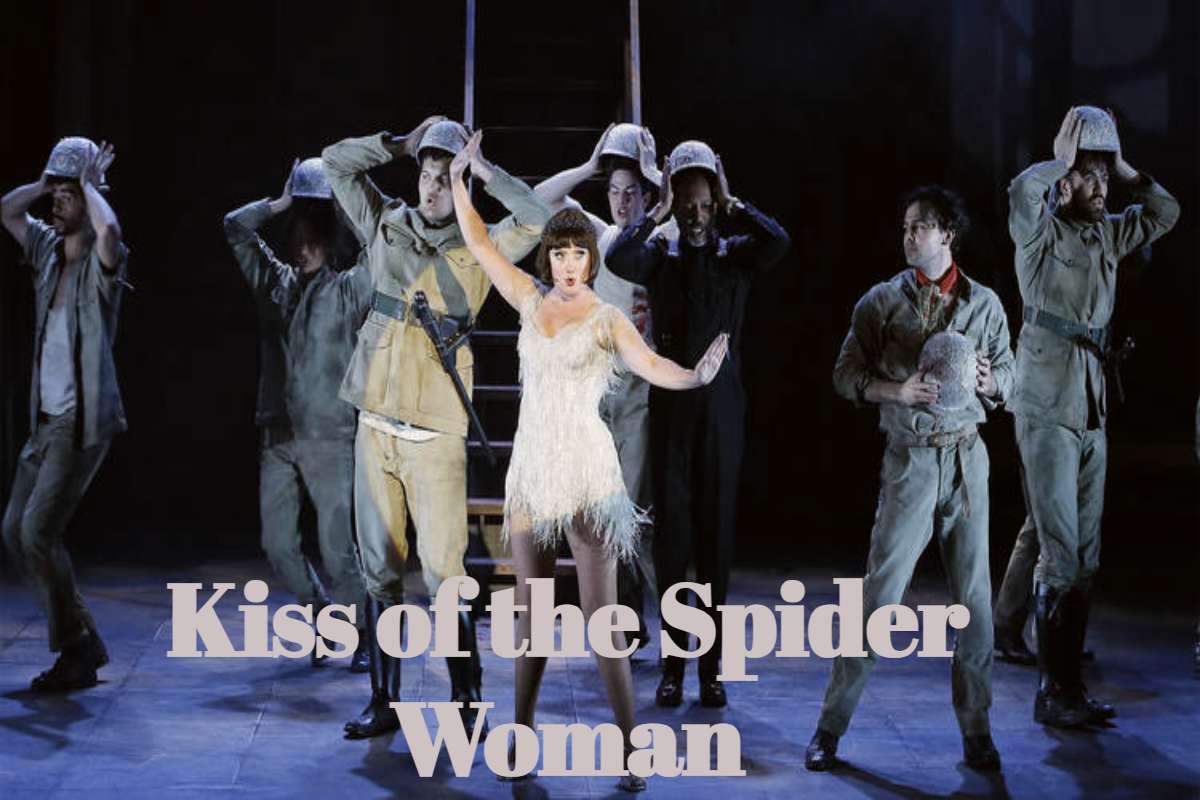Kiss of the Spider Woman is a profound history that transcends traditional storytelling boundaries. It intertwines the complexities of love, politics, and personal identity against the backdrop of authoritarian rule. Set within the confines of a prison cell, it challenges traditional definitions of masculinity and human connection. Through intricate dialogue and symbolism, it explores how imagination and empathy become acts of resistance in oppressive times.
The Historical Context of the Story
Understanding the historical context of Kiss of the Spider Woman deepens appreciation for its message. Written by Argentine author Manuel Puig in 1976, the story reflects the colonial and political unrest of Latin America during the 1970s. The narrative captures the tension between revolutionary ideals and authoritarian regimes. IPTV Streaming Within this environment, the characters’ emotional evolution mirrors a broader struggle for freedom and identity.
Plot Overview
At its core, Kiss of the Spider Woman tells the tale of two prisoners sharing a cell. Molina, a gay window dresser, and Valentín, a Marxist revolutionary, come from vastly different worlds. Through nightly storytelling, Molina narrates old films that blend fantasy with emotional depth in Best IPTV Providers. These tales serve as a refuge from reality, slowly transforming their connection from mistrust to mutual understanding. The novel reveals how vulnerability can lead to spiritual liberation even in physical captivity.
Themes of Love and Human Connection
The story redefines love as an act of courage and transformation. Molina’s empathy and Valentín’s idealism collide yet harmonize in their shared humanity. Love becomes a bridge between ideology and emotion, creating a language that transcends boundaries. Through the intimacy of storytelling, Puig illustrates that connection can flourish even in spaces of despair and confinement.
The Role of Politics in the Narrative
Politics saturates every layer of the novel’s structure. Valentín represents ideological commitment, while Molina embodies personal truth and artistic sensitivity. Their dialogue reflects the ideological conflict between individual expression and collective struggle. Puig doesn’t romanticize politics; instead, he reveals its deeply human consequences, showing how it shapes personal choices, relationships, and sacrifices.
Identity and Self-Discovery
Identity in Kiss of the Spider Woman is fluid and multifaceted. Molina, who embraces his femininity, challenges society’s rigid gender norms. Valentín undergoes his own journey of self-reflection as he learns empathy and acceptance are IPTV Subscription Dubai. Their transformation emphasizes that identity is not fixed but evolves through love, pain, and shared experience. Puig’s portrayal encourages readers to question how culture and power define who we are allowed to be.

Symbolism of the Spider Woman
The Spider Woman is one of the novel’s most potent symbols. She represents both entrapment and empowerment. The spider’s web embodies the illusions of love, beauty, and danger. Yet, within that web lies resilience and creation. Molina’s fascination with this figure mirrors his own longing for freedom and recognition. The Spider Woman, therefore, becomes a metaphor for the delicate balance between vulnerability and strength.
Narrative Technique and Structure
Puig’s storytelling technique breaks traditional narrative boundaries. Instead of linear prose, he employs film scripts, dialogue, and official reports. This fragmented style mirrors the fractured identities of his characters. It also blurs the line between fiction and fact, forcing readers to engage actively with the text. The experimental structure enhances emotional intimacy while reflecting the chaos of political and personal oppression.
A Modern Reflection
Even decades later, the novel’s questions remain urgent. What defines love in the face of repression? How do we preserve individuality within collective struggle? Puig’s narrative offers no simple answers but rather, a mirror for self-reflection Top IPTV Providers. The balance of emotion and intellect makes this story perpetually relevant across generations.
Influence on Latin American Literature
Puig’s approach influenced a new generation of Latin American authors. By merging cinematic technique with social critique, he expanded the possibilities of narrative form. His use of dialogue-driven storytelling inspired authors exploring identity and exile. The novel remains a cornerstone of postmodern Latin American literature for its daring authenticity.
Connection to Broader Social Movements
The novel aligns with broader movements advocating human rights and LGBTQ+ acceptance. It highlights how love can dismantle prejudice and how storytelling can unify divided voices. Puig’s narrative anticipated future cultural dialogues about inclusivity and representation, making it both prophetic and transformative.
Entertainment, Access, and Global Narratives
The global spread of storytelling has expanded dramatically. From Latin America to the Middle East, digital access allows people to experience universal themes of love and resilience. Through modern streaming networks and IPTV Dubai, cultural exchange thrives beyond borders. This digital democratization of media images aligns with Puig’s belief in imagination as liberation stories connect humanity despite political or social walls.
Culture and Modern Engagement
Today’s audience thrives on accessibility. In an age dominated by content streaming, systems like IPTV Subscription Dubai illustrate how narratives reach broader audiences. They provide instant access to films that inspire empathy and reflection. Just as Molina’s stories offered emotional refuge, digital subscriptions offer gateways to art that challenges, comforts, and unites people worldwide.
The Power of Shared Experience
Puig’s story remains a testament to shared experience as the foundation of understanding. Molina and Valentín’s bond shows that differences can become strengths when the heart leads. The novel teaches that love’s most significant power lies in its ability to humanize even the most divided souls. It’s a timeless reminder that empathy can dissolve fear.
Global Resonance and Adaptability
The universal nature of this story ensures its continued relevance. Whether read in classrooms or streamed through IPTV Subscription, its themes remain resonant. By merging sentiment, ideology, and creativity, Puig created a narrative that defies cultural and linguistic boundaries. Every adaptation, reinterpretation, and reader adds a new layer to its evolving legacy.
Enduring Message and Moral Insight
At its essence, Kiss of the Spider Woman celebrates the resilience of the human spirit. It asserts that imagination is not a defect but a source of strength. Puig teaches that understanding and love are the truest forms of freedom. Through Molina and Valentín’s story, readers are reminded that even in captivity, the heart can fly.
Key Literary Features
- Fusion of cinematic and narrative storytelling
- Deep psychological and emotional layering
- Exploration of identity beyond societal norms
- Political commentary through personal dialogue

Reasons for Lasting Relevance
- Universal themes of love, politics, and empathy
- Courageous representation of marginalized voices
- Innovative structure that defies conventions
- Continued academic and cultural discussion
Conclusion
Kiss of the Spider Woman endures as a masterpiece of human understanding. It transcends boundaries of gender, ideology, and culture to reveal the universal longing for connection. Manuel Puig’s work teaches that imagination can be an act of survival, and love is a form of revolution. The story continues to resonate, inviting each year to confront its own definitions of freedom and truth.
Its legacy reminds readers that identity, compassion, and art remain the strongest forces against oppression and proof that storytelling can indeed change the world.
Frequently Asked Questions (FAQs)
What inspired Manuel Puig to write this novel?
Puig was influenced by his love for classic cinema and his observations of social repression in Argentina. He combined these influences to explore human vulnerability under political pressure.
How does the novel explore the idea of freedom?
Freedom in the story is depicted as emotional and spiritual rather than physical. The characters discover liberation through empathy and imagination, even while incarcerated.
Why is the relationship between the two main characters important?
Their bond demonstrates how empathy bridges ideological divides. It reveals that emotional connection can dismantle prejudice and foster mutual respect.
What makes this story relevant to modern readers?
Its themes of identity, acceptance, and courage remain timeless. In an era of global change, it continues to inspire reflection on human values and compassion.

